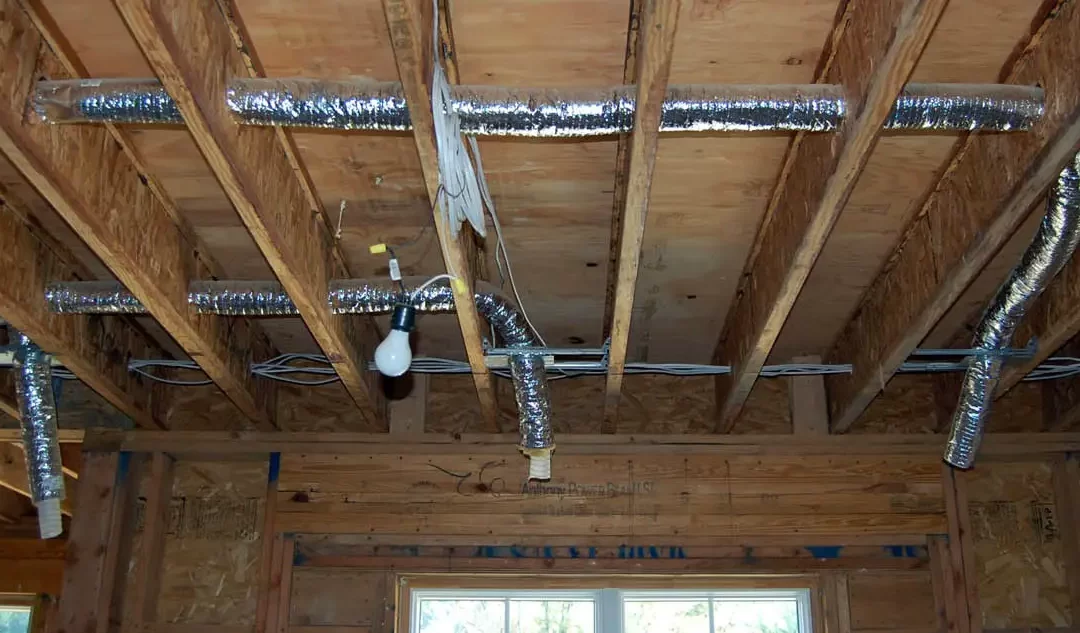Energy Source and Efficiency Ratings:
Your high-velocity HVAC system’s power supply should be carefully considered. A lot of systems run on electricity, but some might use things like natural gas or other renewable energy. Find out how much and how readily available the energy source you’ve chosen is where you live. In addition, you should check the efficiency ratings of the system, which include things like the cooling system’s SEER. Better energy performance and possible cost savings are indicated by higher efficiency ratings.
User-Friendly Controls and Accessibility:
Look at the high-velocity HVAC system’s controls and see how easy they are to use. A more pleasant personal life is a result of controls that are easy to use and understand. Digital thermostats or smart controllers are common in newer systems; they make setting and monitoring temperatures a breeze. Take into account not just your own tastes but also the requirements of every member of your household, even those who are less tech knowledgeable. The comfort and ease of use of your HVAC system are greatly improved by controls that are easy to use.
Emergency Backup Systems:
Find out whether there are any backup systems that can handle your high-velocity HVAC system in an emergency. When the power goes out, your HVAC system may not work, which is especially problematic during storms. In order to keep critical HVAC services running during emergencies, you need find out if the system can be connected to backup power sources. This safeguards your system from harm and guarantees constant comfort.
Space Constraints and Aesthetics:
Homes lacking adequate room for conventional ducting are ideal candidates for high-velocity HVAC systems. Take assessment of your available space before settling on this system. For homes with limited space or older construction, high-velocity systems are a great option due to the tiny and flexible ducts that make installation easier in tight areas.
Think about how the system will make your home look as well. Compared to larger, more conventional vents, the smaller ones used by high-velocity systems are more aesthetically pleasing and modern. A high-velocity system may be the best option if you care deeply about the way your home looks.
Manufacturer Reputation and Product Reviews:
Look into the high-velocity HVAC system manufacturer’s reputation before making a final decision. Reviews, testimonials, and ratings left by actual customers can give you a good idea of how well and how reliable the system is in regular use. You can tell if a company is serious about making high-quality, long-lasting products by looking at their review score. When making decisions, keep in mind any frequent complaints from customers and consider their feedback.
Future Expansion and Upgrades:
Your house and way of life may undergo changes in the future, so plan accordingly. Think about how easily the high-velocity HVAC system you’re considering can accommodate modifications and expansions. An adaptable system can save you time and money in the long term if you intend to expand rooms, renovate, or make other changes to your home without requiring major changes. To keep your system adaptable and expandable, talk to your HVAC technician about future-proofing alternatives.
Warranty and Long-Term Support:
Carefully consider the manufacturer’s and HVAC installer’s warranty policies and any other possibilities for long-term support. The manufacturer’s faith in the product’s longevity and functionality is shown by the extended warranty. In the same way, hire an HVAC technician who will be there for you long after the installation is complete, not just during the initial setup but also for routine maintenance and emergency repairs. You can rest easy knowing that your investment is protected thanks to a dependable guarantee and support system.
Environmental Impact and Sustainability:
Think about how the high-velocity HVAC system’s sustainability features affect the environment. A smaller carbon footprint is the result of energy-efficient systems, but it may be even smaller if you look at alternatives that use recyclable materials or use environmentally friendly refrigerants. Additionally, certain systems may make use of cutting-edge technology to reduce their influence on the environment. You can bring your home’s HVAC system in line with larger environmental objectives by going for a system that prioritizes sustainability.
Local Regulations and Building Codes:
The installation of HVAC systems may be subject to different rules and regulations depending on the local government. It is essential that the selected high-velocity system adheres to these rules. Things like noise limits, environmental concerns, and equipment efficiency criteria fall under this category. Fines and other problems may arise from not following local codes. The HVAC technician you hire should be familiar with the regulations in your area and can help you get the permissions and take the other steps you need to comply.
Resale Value and Home Appraisal Impact:
Even though improving your home’s comfort should be your top concern, you should also think about how such improvements could affect your home’s selling value and evaluation. The value of your home can be enhanced by installing a cutting-edge HVAC system that is both energy efficient and modern. If you intend to sell your home in the future, it could be wise to investigate current market trends and talk to real estate agents to find out how much a high-velocity system could increase your property’s worth.
Installation Timeframe and Disruption:
Talk to your HVAC technician about the expected installation timeline and any interruptions that may occur. While high-velocity systems are notoriously easy to install, it is still helpful to have an idea of when the installation is likely to happen so that you can prepare appropriately. Also, make sure you know whether there will be any interruptions to your regular routine throughout the installation. You and your family will have an easier time dealing with the process if you are prepared for the noise, dust, and temporary changes that are likely to occur.

